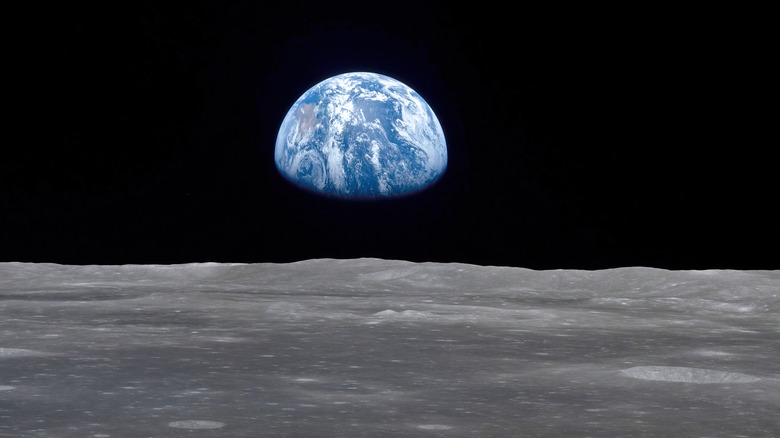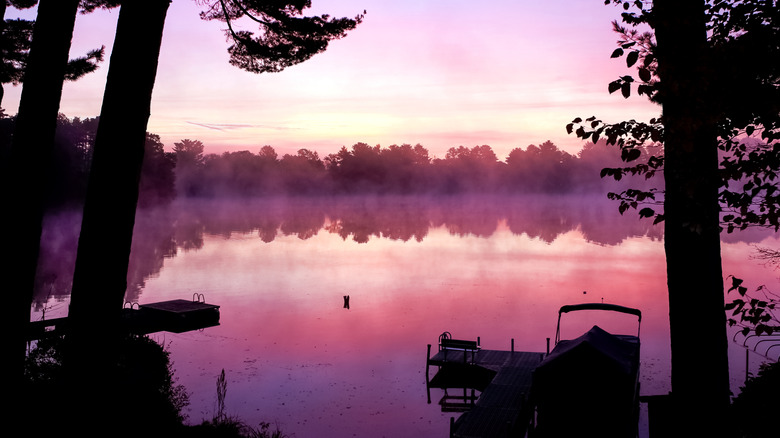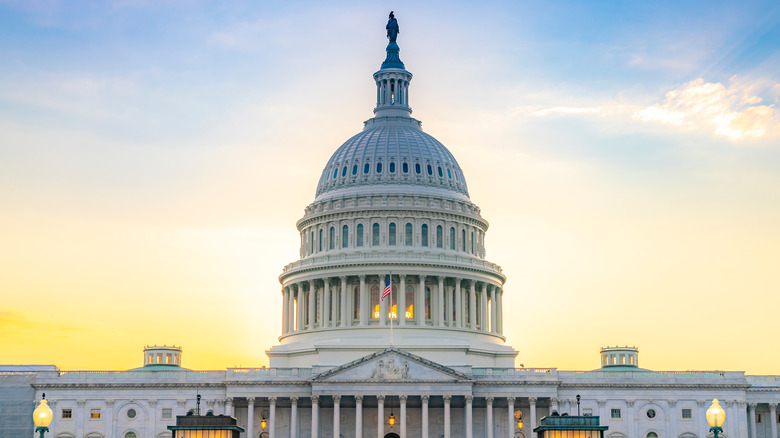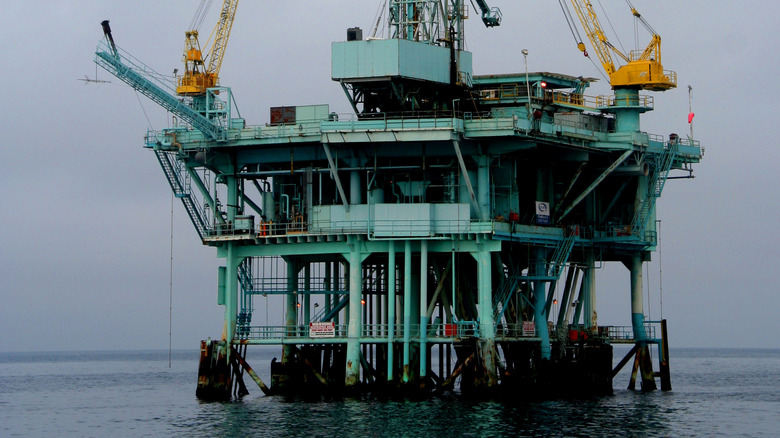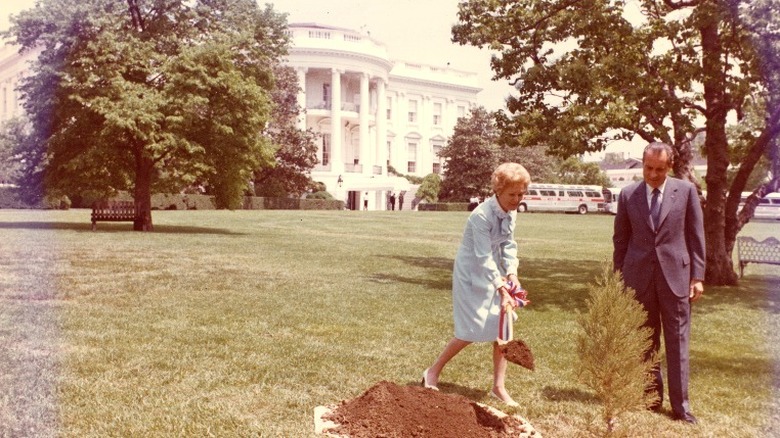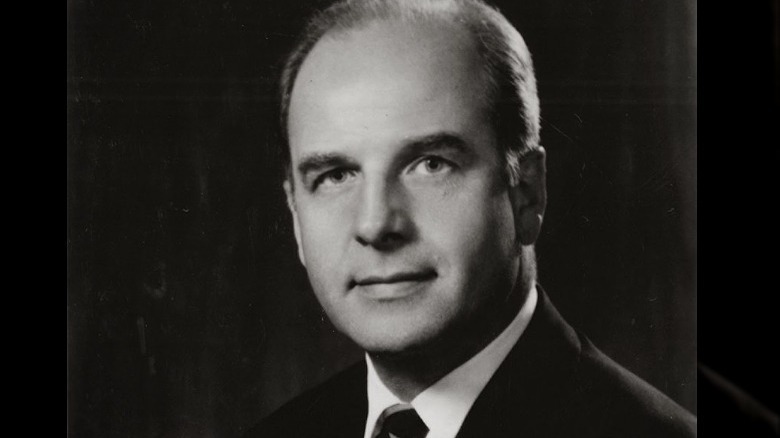Why Senator Gaylord Nelson Founded Earth Day
In the 1960s, it was becoming clear that the environment was in dire straits. In 1962, Rachel Carson published "Silent Spring," warning of the dangers of the pesticide DDT, according to the Natural Resources Defense Council. Its most famous chapter, "A Fable for Tomorrow," described a U.S. town in which all life, including birds and children, had been "silenced" by toxic chemicals. The book sold more than 500,000 copies in 24 countries and helped spawn the modern environmental movement, according to the Earth Day website.
In January 1969, there was a major oil spill off the coast of Santa Barbara, California. A blowout caused around 3 million gallons of oil to flow into the Pacific Ocean, according to Smithsonian Magazine. The oil washed up on beaches and killed between 3,700 and 9,000 birds. A little less than six months later, a spark from a nearby train track set fire to industrial pollution lying on the surface of Cleveland's Cuyahoga River (per History). The flames rose as high as five stories. While fires on the polluted river were actually not rare in the 1960s, this one caught the nation's attention. The oil spill and the river fire made people realize that something about how we treated the natural environment had to change. But what? And how?
The Conservation Governor
This is where Gaylord Nelson entered the scene. At the time of the Santa Barbara oil spill, Nelson was the junior senator from Wisconsin, according to Earth Day. However, he had been worried about the environment long before that particular disaster. Nelson was born in 1916 in Clear Lake, Wisconsin, according to the Wilderness Society. Growing up, he was inspired both by the nature of his home state and the progressive politics of its famous senator "Fighting Bob" La Follette, according to Nelson Earth Day. He graduated from the University of Wisconsin with a degree in law and fought in World War II before returning to his home state to pursue a career in politics.
In 1948, he was elected as Dane County's state senator, the Wilderness Society said. In 1958, he was elected governor of Wisconsin. During his tenure, he created a single Department of Resource Development, established a Youth Conservation Corps to that employed more than 1,000 young people, and pushed for $50 million to be put towards his Outdoor Recreation Action Program (ORAP) to turn land into public parks or wilderness (per Nelson Earth Day). These actions earned him the nickname the "conservation governor" and a national Senate seat in 1962. As governor, Nelson was already convinced that the environment was the "most important issue facing us as a society" but that other politicians didn't seem to agree (via the Los Angeles Times). Trying to change their minds would be his mission in the senate.
Senator Nelson
Gaylord Nelson continued to push for environmental protections in the U.S. Senate. He was appointed to the Senate Interior and Insular Affairs Committee, which allowed him to work on conservation issues, according to the Wisconsin Historical Society. He wrote a bill to protect the Appalachian Trail and create a national system of hiking trails. He also co-sponsored the Wilderness Act and the Alaska Lands Act and secured protections in his home state for the St. Croix Wild and Scenic Riverway and the Apostle Islands National Lakeshore. In 1965, he introduced the first legislation to ban DDT. Further, he promoted a program called Operation Mainstream that funded training in green jobs for the poor and elderly, according to Nelson Earth Day.
Nelson worked with others on his conservation passion. He persuaded President John. F. Kennedy to undertake an Earth Tour to raise awareness about the environment, according to the Los Angeles Times. He also backed other progressive causes like the Civil Rights Movement and the War on Poverty, seeing all of his causes as interconnected. "Environment is all of America and its problems," he said, according to Nelson Earth Day. "It is rats in the ghetto. It is a hungry child in a land of affluence. It is housing not worthy of the name; neighborhoods not fit to inhabit." However, he did not find as much support for the environment as he would like among his fellow senators. By the end of the 1960s he decided to look for allies among the ordinary people of the U.S. instead.
A teach-in on the environment
Inspiration for exactly how to reach the people of the United States came to Gaylord Nelson when he visited California in the wake of the Santa Barbara oil spill. The spill had occurred because Union Oil had persuaded the government to allow it to enclose its offshore well in 239 feet of steel casing instead of the standard 300 feet, according to Smithsonian Magazine. The incident was the "ecological shot heard round the world," as New York Times' environment correspondent Gladwin Hill put it in 1970. It prompted local residents to organize against offshore drilling and drew national visitors including President Richard Nixon.
Nelson visited the site of the spill in the summer after speaking at a water quality conference. He then flew to Berkeley for another scheduled speech. On the flight, he read about the teach-ins university students had organized against the Vietnam War. "It suddenly dawned on me," he recalled, "why not a nationwide teach-in on the environment?" (via the Los Angeles Times). The idea for Earth Day was born.
The first Earth Day
Gaylord Nelson announced his idea for a national teach-in for the environment to the media, according to Earth Day. He reached across the aisle and asked Republican Congressman Pete McCloskey to co-chair the event. They also needed a young person to make the idea happen on college campuses, so they brought on young activist Denis Hayes. In order to appeal to students, they picked a date between spring break and final exams, which is why Earth Day falls on April 22. Finally, they picked the name Earth Day.
Some 20 million U.S. residents participated in the first Earth Day in 1970 — 10% of the total U.S. population. University of Southern California students honored the day by fitting their school mascot Tommy Trojan with a gas mask and burying an engine, according to Smithsonian Magazine. Bikers flash mobbed the state capitol in Colorado, and concerned citizens removed five tons of trash from the landscape in West Virginia. All told, teach-ins were held on more than 1,500 college campuses. President Richard Nixon and First Lady Pat marked the day by planting a tree on the White House front lawn, according to NPR. So many Congresspeople participated that the House and Senate had to close for the day, according to the Los Angeles Times.
Gaylord Nelson's legacy
The first Earth Day was by all measures a resounding success. It has been credited with inspiring the formation of the Environmental Protection Agency and the passage of landmark environmental legislation, according to the Earth Day website. Major laws that followed in its wake included the Clean Air Act, the Clean Water Act, and the Endangered Species Act. The 1970s came to be known as the "environmental decade," according to Nelson Earth Day. Gaylord Nelson had achieved his goal of making the environment a political priority.
However, Nelson did not rest on his laurels. He lost his reelection bid in 1980, but he continued to fight for the environment by serving as Wilderness Society Counselor until his death in 2005. President Bill Clinton honored Nelson with the Presidential Medal of Freedom in 1995, according to the Los Angeles Times. Clinton called Nelson "the father of Earth Day" and the grandfather of the Clean Air Act, the Safe Drinking Water Act, and the Environmental Protection Act. Every April 22, when people around the world gather to celebrate Earth Day, they are honoring his legacy.
